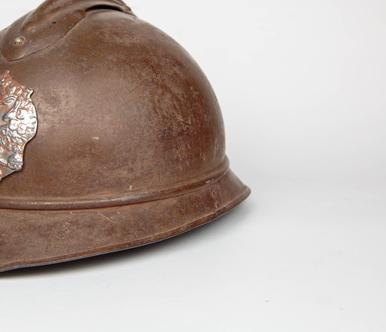The partisan from the museum’s collection was made in the 17th century. It is an edged weapon, a type of polearm, intended for piercing armor. The tip of the exhibit is chipped off. Usually they were forged long, wide and flat. Blacksmiths mounted metal tips on long poles, which reached two and a half meters or more in length.
Blacksmiths who made partisans usually forged tips with one characteristic feature — they added ears of different lengths and configurations in the plane of the blade. Researchers managed to establish that the ears of the most ancient artifacts were rather small.
It is believed that partisans appeared in the 16th century among the Landsknechts — German mercenary infantrymen. Later they practically fell out of military use and performed mainly ceremonial roles. Partisans were used by bodyguards of monarchs and people of royal status.
Partisans came to Russia in the 17th century. They were used as honorary weapons of officers, and the tips were decorated with ornaments and coats of arms. Alexey Fomich Veltman in his 1844 book described a number of artifacts from the Moscow Armory, in particular two partisans numbered 45 and 46, dated 1634.
The 36th volume of the 1902 Brockhaus and Efron Encyclopedic Dictionary describes weapons used by soldiers during the reign of Peter I as follows: “Every soldier was armed with a sword and a gun, and cavalry dragoons had a pistol and a palash [broadsword]; officers, except grenadiers, who had guns with a golden shoulder strap (belt, sling), also carried swords and partisans.”
In 1711, Peter I issued a decree, according to which infantry officers had to carry partisans only in peacetime when in formation, and in wartime — if necessary. In 1719–1720, the colors of the tassels on the poles of the partisans were strictly regulated. Cavalry and artillery troops did not carry partisans.
Partisans of the Guard
featured an image of the St. Andrew’s Cross under the crown framed with
trophies. In 1730, only Musketeer officers were provided with partisans. Later,
these weapons were replaced by spontoons — shortened partisans. Subsequently,
soldiers used halberds and many other types of polearms.



